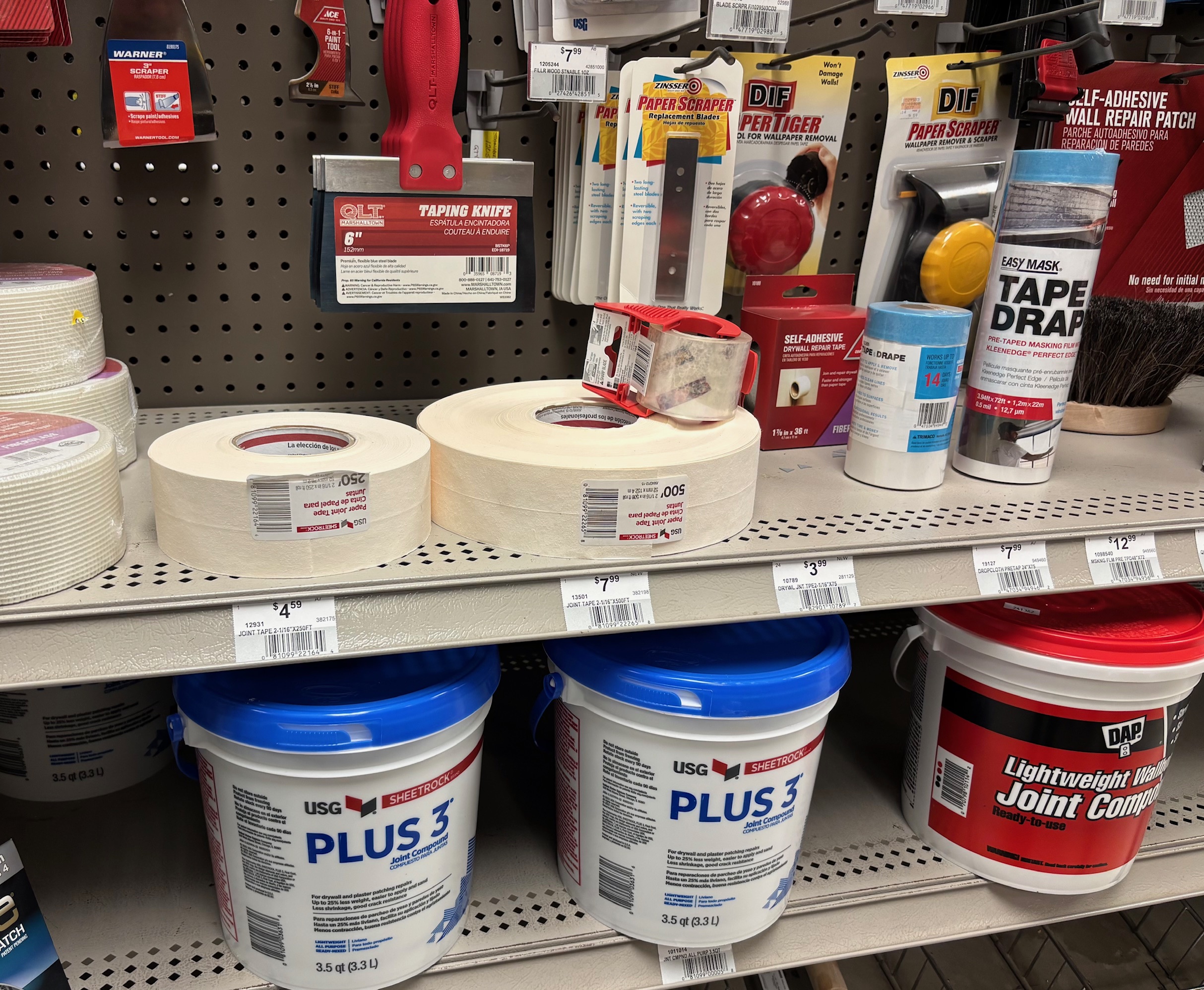Joint Compound for a Wall
Tags | |
UUID | 1f1e7a38-cd82-11ed-8f09-bc764e203090 |
The Drywall Joint Compound for a Wall calculator estimates the amount of joint compound (spackling) needed to finish drywall sheets on a wall based on the dimensions.
INSTRUCTIONS: Choose units and enter the following:
- (L) Length of Wall
- (H) Height of Wall
Drywall Joint Compound for Wall (nG): The calculator returns the number of gallons of joint compound.
The Math / Science
Drywall is attached to studs using drywall screws or nails. The best practice puts a nail on every stud in rows approximately 10" apart. Where boards vertically meet, the studs have two sets of nails. This means that the number of nails or screws needed per square feet varies by the number of boards, which results in fewer nails or screws with longer (e.g., 4x12) wall boards.
Every nail or screw is covered with joint compound. Every seam and corner are taped and also covered with joint compound.
The general recommendation is for 0.9 gallons for every 100 square feet of drywall finished area.
DRYWALL CALCULATOR includes functions and data that support the use of drywall including:
- Drywall for a Room: This computes the number of 4x8 or 4x12 panels and drywall screws or nails needed for the interior of a room (walls and ceiling).
- Cost of Drywall for a Room: This computes the cost of drywall based on room dimensions and unit price of drywall boards.
- Drywall Nails or Screws for a Room: This compute the number of drywall of pounds of screws or nails for a room based on the dimensions.
- Joint Compound for a Room: This computes the amount of joint compound (spackling, mud) needed for a room based on the dimension.
- Drywall Sheets for a Wall: This compute the number of 4x8 or 4x12 sheets and drywall screws or nails needed for one wall.
- Cost of Drywall for a Wall: This computes the cost of drywall based on the wall dimensions and unit price of drywall boards.

- Drywall Nails or Screws for a Wall: This computes the number of pounds of drywall nails or screws needed for a wall based on the dimensions.
- Joint Compound for a Wall: This compute the number of gallons of joint compound (mud, spackling) needed for a wall.
- Joint Compound for an Area: This computes the number of gallons of joint compound needed for a specified number of square feet in drywall.
- Weight of Drywall Boards: This computes the total weight of a number of drywall boards (sheets).
The Drywall Calculator utilities also include a pricing survey from nationally advertised retailers. The survey is done to help vCalc's users make rough cost estimations on drywall projects, but the user is always encouraged to use local pricing for the most accurate cost calculations.
Drywall is an indoor paneling used to cover studs, plumbing and wiring, which also serves as the base for finishing such as paint or wallpaper. Drywall is also known as wall board, sheet rock and gypsum board. Drywall has a paper layer cover and an interior made of gypsum that is easily cut and somewhat pliable. Drywall typically comes in two sizes, 4x8 and 4x12 feet, and in several thicknesses including 1/4", 3/8", 1/2", and 5/8". Drywall can be common, mold/moisture resistant and with higher fire prevention ratings. Drywall is affixed to interior walls via drywall nails and/or drywall screws.
Collections
- Comments
- Attachments
- Stats
No comments |

